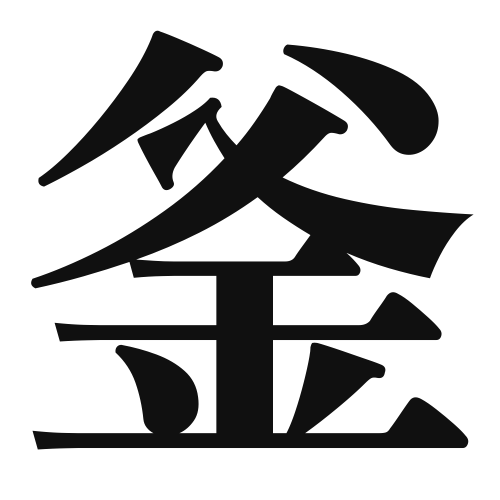1. Overview of Meaning
The kanji “釜” (pronounced “kama”) means “kettle” or “pot.” It refers to a cooking vessel typically used for boiling water or cooking food.
2. Formation and Radical
Formation of the Kanji: The kanji “釜” is a phono-semantic compound (形声文字), which combines a semantic component related to metal (金) and a phonetic component that suggests its pronunciation.
Radical: The radical for “釜” is “金” (metal), indicating that it is related to metal objects.
3. Examples of Usage
Common Words and Phrases: Some common words that include “釜” are:
- 釜飯 (kama-meshi) – a type of rice cooked in a pot
- 釜茹で (kama-yude) – boiling in a kettle
Example Sentences in Daily Conversation:
- 「この釜でご飯を炊きます。」(I will cook rice in this kettle.)
- 「釜の水が沸騰しています。」(The water in the pot is boiling.)
4. Synonyms and Antonyms
Similar Kanji: A similar kanji is “鍋” (nabe), which also means “pot” but is typically used for cooking stews or soups.
Antonyms: There are no direct antonyms for “釜,” but a contrasting term could be “皿” (sara), meaning “plate,” as it represents a different type of cooking vessel.
5. Cultural and Historical Background
Relation to Japanese Culture: The “釜” has been an essential part of Japanese cooking, especially in traditional dishes like “釜飯,” which highlights the importance of rice in Japanese cuisine.
Proverbs and Idioms: One common saying is “釜の飯を食う” (kama no meshi o kuu), which means “to eat the rice cooked in the pot,” symbolizing the idea of sharing a meal and the bonds formed through communal eating.
